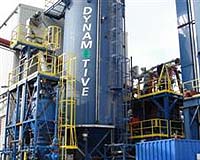
Technological Innovations Fuel Production Of Advanced Biofuels In Latin America
Buenos Aires, Argentina: Jul 16, 2008 - Latin America, with its abundant natural resources for biofuel production, has become a hot destination for biofuels suppliers and end users.
This region is all set to benefit from the increasing need for alternative, sustainable, and environment-friendly fuels, since rising oil prices and stringent environmental regulations have made the use of biofuels imperative.
New analysis from Frost and Sullivan, Latin American Market for Second and Third Generation Biofuels, finds that the biofuels market in Latin America could witness a significant boost due to the development of alternative technologies such as the second and third generation biofuels.
Fuel consumption has been rising in many countries around the world, irrespective of their economic performance. It is vital for suppliers to maintain the ongoing supply, while lowering costs and minimizing negative social, economic, and environmental impacts. Novel biofuel technologies, such as the second and third generation (2G and 3G), should be explored as potential solutions to these requirements.
"2G and 3G biofuels could greatly help diminish the risk of food-biofuel competition," says Jorge De Rosa, Industry Analyst at Frost and Sullivan. "New biofuel technologies, employing alternative inputs, create opportunities for utilizing other sources and inputs for biodiesel production."
Domestic biofuel production could eliminate or reduce issues related to vegetable oil unavailability and price volatility and thereby stabilize trade balance. Additionally, biofuel production can also alleviate the economic situation in Latin America by creating employment opportunities and lowering energy prices.
Although biofuel production has several benefits, manufacturers are under pressure to increase yields, while avoiding the negative fallouts of high water usage and eventual competition with food crops farmers for land.
In this sense, biofuel companies are looking for a way out of this situation by constantly developing production techniques that will help them comply with sustainable development requirements, diminish production costs, increase efficiency and moderate the food-biofuels competition. 2G and 3G technologies are expected to greatly help in this endeavor.
"For instance, in the case of sugarcane ethanol, the lignocellulosic process can increase productivity by 25 to 35 percent," notes De Rosa. "Therefore, using the same plantation area and sugarcane tonnage, the biofuel producer will be able to produce a much higher volume of fuel."
While traditional biofuels are made from feedstock crops, 2G and 3G are produced using non-food crops such as the stalks of wheat and corn, special biomass crops, and waste biomass.
"These processes could utilize the waste products of current food-based agriculture to manufacture fuel in a sustained manner," observes De Rosa. "Pilot plants have already been established for the production of ethanol from wheat straw and syn-diesel from wood chippings."
No comments:
Post a Comment